How to Show Skill Levels on a Resume (Examples)
How can you show skill levels on a resume? Preparing to apply for a work opportunity necessitates gathering the required documentation and tailoring it to the role in question. You may improve your employability and build interest in your application by knowing how to include skill level into your resume. This will urge an employer to take a deeper look at your unique qualifications.
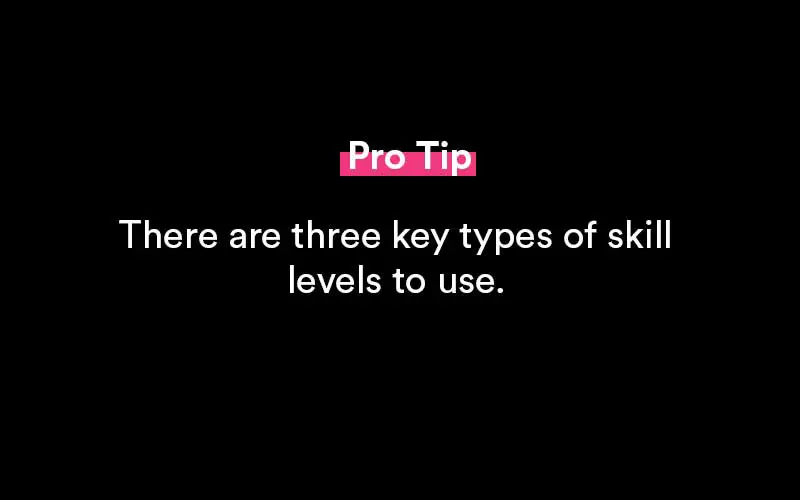
What are skill levels?
A person's skill level is a phrase that may be used to describe their understanding of a subject. To indicate your degree of expertise with a certain talent, words like novice, intermediate, competent, or expert can be given to your personal and professional characteristics.
How can they benefit a resume?
By putting skill level on your resume, you may give your skill section a more organized order and, as a result, give the credentials you choose to include on your resume more significance.
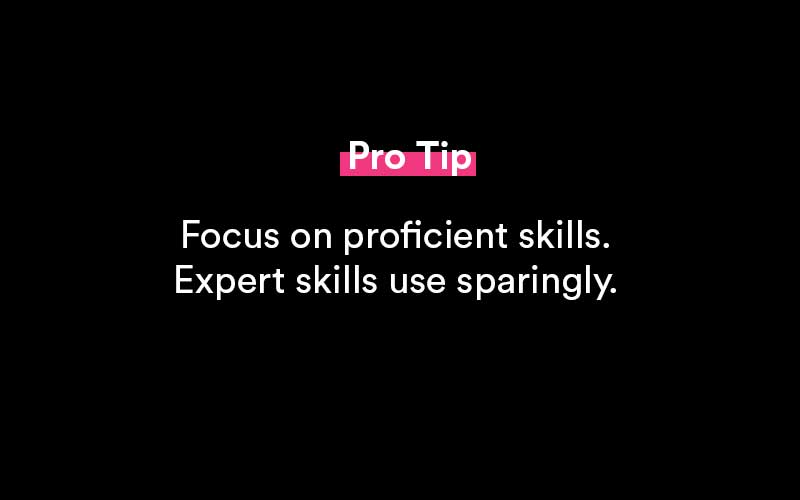
How are skill levels determined?
An employee's skill level determines how successfully he or she performs at work. Employee development is frequently contingent on achieving a certain degree of work expertise. Employees are allocated skill levels during employee training to grade their competency at a certain task.
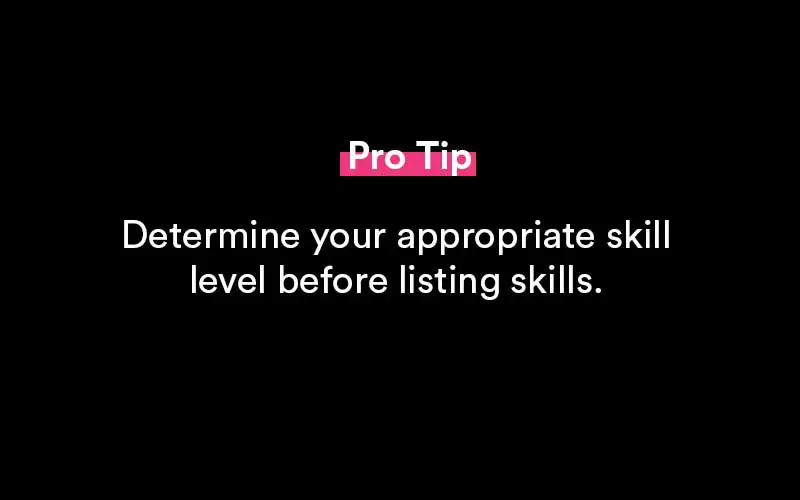
Trainee, Novice, Proficient, and Expert are examples of skill levels. Within those areas, there are sub-categories ranging from 10 to 1, with 10 being the least skilled and 1 being the most proficient. As a result, it is conceivable for a Level 1 Novice to be promoted to a Level 10 Proficient.
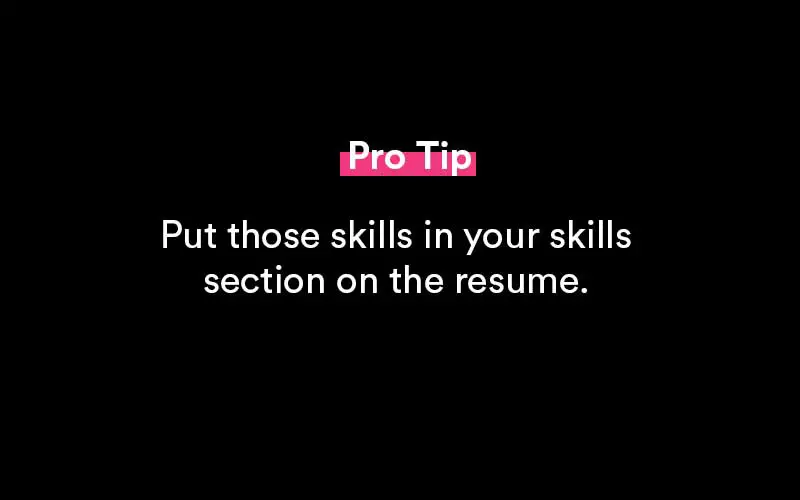
Novice
- Has just rudimentary or textbook knowledge that isn't linked to practice.
- Requires constant monitoring or guiding.
- Has little or no understanding of how to cope with ambiguity.
- When it comes to behaviors, he has a tendency to look at them in isolation.
Advanced Beginner
- Has basic knowledge of key aspects of the practice.
- Straightforward tasks are likely to be done to an acceptable standard.
- Is able to achieve some steps using own judgment, but needs supervision for the overall task.
- Appreciates complex situations, but is only able to achieve partial resolution.
- Sees actions as a series of steps.
Competent
- Has good working and background knowledge of area of practice.
- Results can be achieved for open tasks, though may lack refinement.
- Is able to achieve most tasks using own judgement.
- Copes with complex situations through deliberate analysis and planning.
- Sees actions at least partly in terms of longer-term goals.
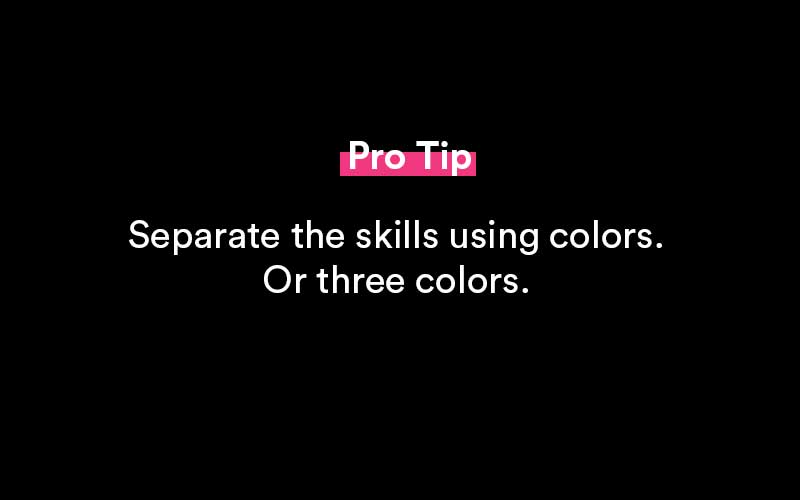
Proficient
- Depth of understanding of discipline and area of practice.
- Fully acceptable standard achieved routinely, results are also achieved for open tasks.
- Able to take full responsibility for own work (and that of others where applicable).
- Deals with complex situations holistically, confident decision-making.
- Sees the overall picture and how individual actions fit within it.
Expert
- Authoritative knowledge of discipline and deep tacit understanding across area of practice.
- Excellence achieved with relative ease.
- Able to take responsibility for going beyond existing standards and creating own interpretations.
- Holistic grasp of complex situations, moves between intuitive and analytical approaches with ease.
- Sees overall picture and alternative approaches, has vision of what may be possible.
How to include skill levels on your resume
When arranging your skills section and degrees of expertise, there are a number of variables to consider.
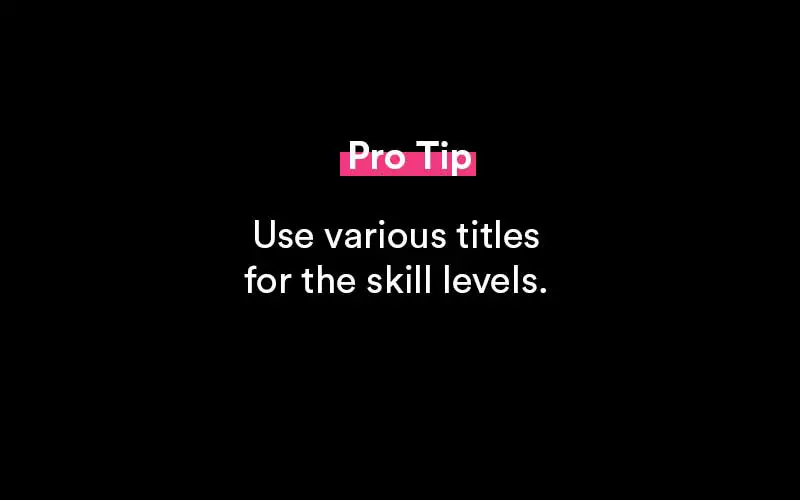
Use a template
Use a template to assist you.
Utilize a resume template to design elements to create an aesthetically attractive skill section, and there may be visuals or charts you can include to illustrate your degree of proficiency with a particular ability if you choose a template for your resume.
List most experienced skills, first
First, make a list of the talents you have the greatest expertise in.
Consider putting the abilities in which you consider yourself an expert ahead of the ones in which you consider yourself proficient or a novice. This might assist an employer focus on your most valuable abilities before skimming through the ones you don't have much expertise with.
List technical skills
Prioritize your technical abilities over your interpersonal abilities.
Regardless of how you structure your talents and skill levels, the technical (hard) skills should always come first, followed by interpersonal (soft) skills. This is significant because it allows employers to view job-related abilities in order of competency as the first items they see. You can include talents that are directly connected to your personality and work ethic after you've stated the job-specific skills you have to offer.
Include expert and proficient skills only
Expert and competent abilities should be included more than novice skills.
Because presenting oneself as an expert in everything may not appear practical to employers, there should be a balance of talents you believe to be an expert or skilled in. However, you should make sure that the number of expert and competent talents you provide in your resume's skill section outnumbers the number of basic or beginner-level (novice) skills you list.
Choose skills for the job/job description
Choose talents that are appropriate for the job.
Before making a list of your talents and their degree of expertise, go over the job description. Consider which of the desirable applicant characteristics and credentials you can include into your own skill area. Take into consideration any reference of the degree of experience required for a given job responsibility, and reflect this in the skill level you attribute to a skill in your resume.
Use white space
Make use of horizontal space.
Working horizontally across the page rather than vertically might help you find the ideal method to fill in vacant areas on your resume. To conserve space and optimize your skill section, you may organize your skills and level of experience using columns of threes or fives that are put side by side instead of beneath one another.
How to demonstrate skill levels on a resume
Here's how to put skill levels on your resume.
Use colors to display the skill level (example)
Consider utilizing color to create a unique strategy that attracts attention to your CV while also displaying your degree of competence. You should provide a key to show which hue corresponds to which degree of experience.
Green: Microsoft Office, Email Marketing, SEM, SEO
Yellow: ROI, Planning, Strategy
Orange: Public speaking
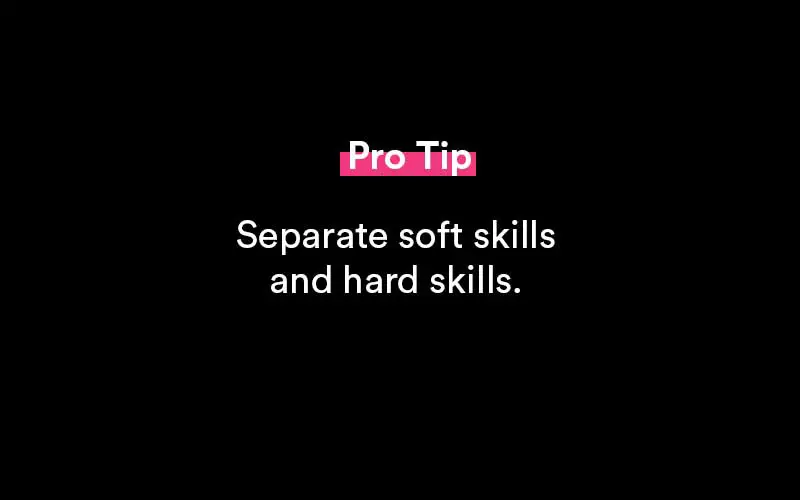
Place skills on a skill level category (example)
List your abilities in experience-based categories to emphasize your ability level. Employers will be able to see the areas you claim to be an expert, competent, or novice in.
Expert: SEO, SEM, Direct Marketing, PPC lead generation
Proficient: Google Analytics, Database Management
Novice: Public Speaking
Language and writing skills can be used in these categories, too.
Use visuals to help
Using graphics and other design aspects to identify a talent as expert, competent intermediate, or novice on your resume might be a unique approach to display your degree of ability for a certain skill.
Separate hard and soft skills (example)
By classifying your hard and soft skills and stating your experience level to the right of each skill, you may better identify your degrees of expertise. Hard skills are technical abilities that can be immediately applied to the work at hand. Soft skills are interpersonal abilities that represent personal characteristics that can help you perform successfully in work.
Technical skills: SEO marketing, direct mail marketing, Google Analytics
Soft skills: Interpersonal skills, detail-oriented, task delegation
Want to know what the best skills for your resume are?
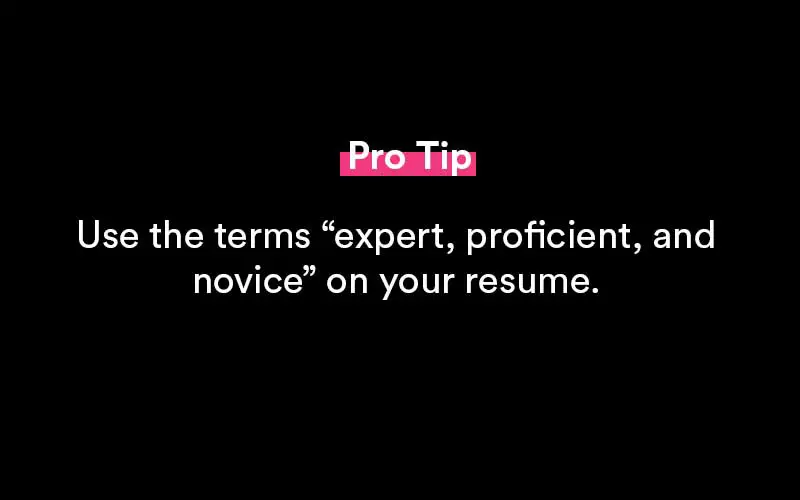
Popular Resources

Featured
35+ Phone Interview Questions & Best Sample Answers
Phone interviews have become a core part of the process when attempting to find a secured placement for an open position. Companies receive massive responses from potential candidates for any..

Featured
12+ Best Questions To Ask A Recruiter
Concerning a job search, you might receive numerous offers from your recruiters. Before you choose one, you need to assess all the conditions, for which it is vital that you know everything associated with the offered position..

Featured
Answering "What Makes You Unique" In A Job Interview
Answering this question during a job interview requires more than knowing why you are unique as an individual. Yes, the true scientific answer is made up of two main components: your..

Featured
250+ Ice Breaker Questions for Life
An ice breaker question is a question that’s asked from one person to another person in order to act as a conversation starter. It brings a connection...

Featured
10 Best Answers to "What Motivates You?"
Open-ended questions like “What motivates you?” can elicit a deer-in-the-headlights reaction from job candidates if they are unprepared. It’s a broad question and can leave the interviewer..

Featured
Answering "How Did You Hear About This Position" In An Interview
A lot of interviewers ask this question - how did you hear about this position? This way they can judge you if you are a passive or an active job seeker..

Featured
8 Best Thank You Emails After an Interview (Samples, Free Templates)
Writing a thank you note after an interview says a lot about you as a potential employee. Most notably, it says that you care about the opportunities presented..

Featured
Writing a Resignation Letter (How To Write It, Samples)
Writing the perfect letter of resignation is more of an art than it is a science. And we’re going to cover how to master that art form in this full guide..

Featured
How to End a Letter (Example Salutations, Sign Off's)
Knowing how to end a business note or email is an important skill to develop. It helps portray a sense of confidence, respect and tone to your message..
